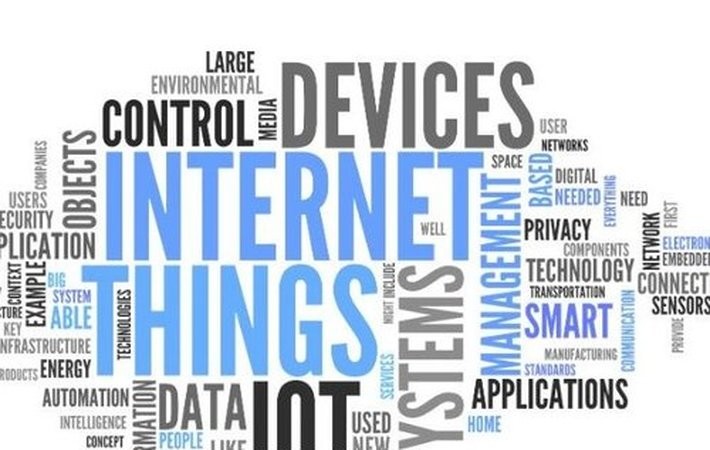
Published on 12/06/2016 | Technology
Devarajan Ganesan, associate vice president at HCL Infosystems, says that Internet of Things (IoT) is driving the next wave of disruption in Information Technology (IT) is by now well-acknowledged and accepted globally.
It is the system of interrelated computing devices, mechanical and digital machines, objects, animals or people, provided with unique identifiers and the ability to transfer data over a network without requiring human-to-human or human-to-computer interaction.
IoT offers the potential to completely transform the way we think of next generation automation and data driven decision making approach, impacting almost all walks of life including personal, work and social. According to an industry Report, IoT will be the largest device market in the world, more than double the size of the smartphone, PC, tablet, connected car, and the wearable market combined by 2019. Drop in sensor prices, rising internet penetration, and the blistering rise in sales of smartphones and tablets are the main drivers of growth in IoT solutions.
Increased efficiency and lower costs with full control to the uses, promise to make IoT a desirable solution not just for Enterprises but for the Government sector and private homes as well. Specifically, the Automobile, Healthcare and e-Commerce sectors are leading the trend of IoT adoption. In the Indian context, the Government’s flagship programs such as Digital India and Smart Cities, offer a lot of potential for applicability of IoT solutions.
However, before jumping onto the IoT bandwagon, there are certain factors that need to be considered in order to ensure a smooth integration.
Security concerns – This is currently the biggest risk perceived in IoT implementation, both in terms of security of devices and access to the data generated. For security of devices, both ends of communication must be able to support the chose security measure. As data generation is a critical aspect of IoT, the data must be protected throughout its life cycle. This is complex because data flows across multiple administrative boundaries, each possessing different policies and intents.
It is crucial to make security one of the prime focuses from the very start and develop adequate systems, policies and procedures for managing the information generated. Organizations should assess all possible threats, apply the latest security measures, and regularly test their efficacy. Similarly, before deploying IoT take into consideration all of the data that would be generated and to use and protect it from being compromised.
Integration of IoT solutions with existing Infrastructure – IoT can be looked upon as a System-of-systems, with various interconnected devices, sensors and gateways, Connectivity solutions; Device management platforms, etc. With diverse platforms, numerous protocols and a large numbers of APIs, combined with confusion around evolving standards, IoT systems integration and testing may pose a humongous challenge. Each components of the IoT ecosystem will require some kind of integration for the data to flow, and each integration has the potential to create new challenges for deployment. For better utilization of the systems specified in IoT deployment, all the components must communicate efficiently and reliably.
Lack of common Standards – Like in case of most evolving technologies, IoT lacks a common set of standards and technologies that are required for compatibility and ease-of-use for running an IoT device. The immense potential offered by IoT may not be fully utilized until common standards develop. This is inhibiting widespread, efficient IoT adoption as industry perceives different standards, connectivity patterns and stages of maturity as windows for possible hacking and other security breaches. A set of common standards also allow IoT devices to connect safely and seamlessly.
Data Ownership and Access – Gartner estimates that 6.4 billion “things” will be used worldwide in 2016. With the massive amount of data generated by these devices, ownership and access to that data is becoming a real concern. As IoT involves multiple data controllers and co-controllers, with many layers of dependencies between different stakeholders to perform their duties required by the data protection and privacy laws. This may lead to confusion in terms of who is responsible and to what extent, leaving the data potentially vulnerable.
Also, correlation between the data generated and its commercial value is quite high. For example, IoT is being implemented by many capital-intensive industries and other service providers on one hand, and the companies using their services, on the other. As the data generated by these businesses collectively will make them more efficient and agile; it attaches a significant commercial value. Hence, access to this data along with the various forms of its usage will be vital for all involved.
Rapid demand in bandwidth requirement – Connecting new devices and sending data through them is a vital step. For IoT deployment, connectivity must be established, either with Wi-Fi, cellular, wired Ethernet or satellite. Even with available wired or Wi-Fi connections, networking details and firewalls need to be addressed.
When these devices are connected on a network, it needs to be provisioned and effectively managed. Similarly, there will be a significant increase in demand for smooth Internet connection and bandwidth. Unavailability or interruptions may pose business continuity concerns, affecting consumer experiences, employee productivity and ultimately enterprise profitability. To avoid such instances, Enterprises must add bandwidth and boost traffic management and monitoring.
As in case of most technology evolutions, IoT is at an inflection point. It will naturally go through all the stages of innovation, immense competition, evolving standards as well as some confusion. If organizations can carefully weigh and factor for the potential risks associated, IoT deployment will be smoother, more flexible and secure. Done right, IoT has the potential to bring in significant savings and optimization in terms of time and resources, turning IoT deployments into a source of significant value and revenue for enterprises.
By Devarajan Ganesan, associate vice president at HCL Infosystems
This article was originally posted on LinkedIn.